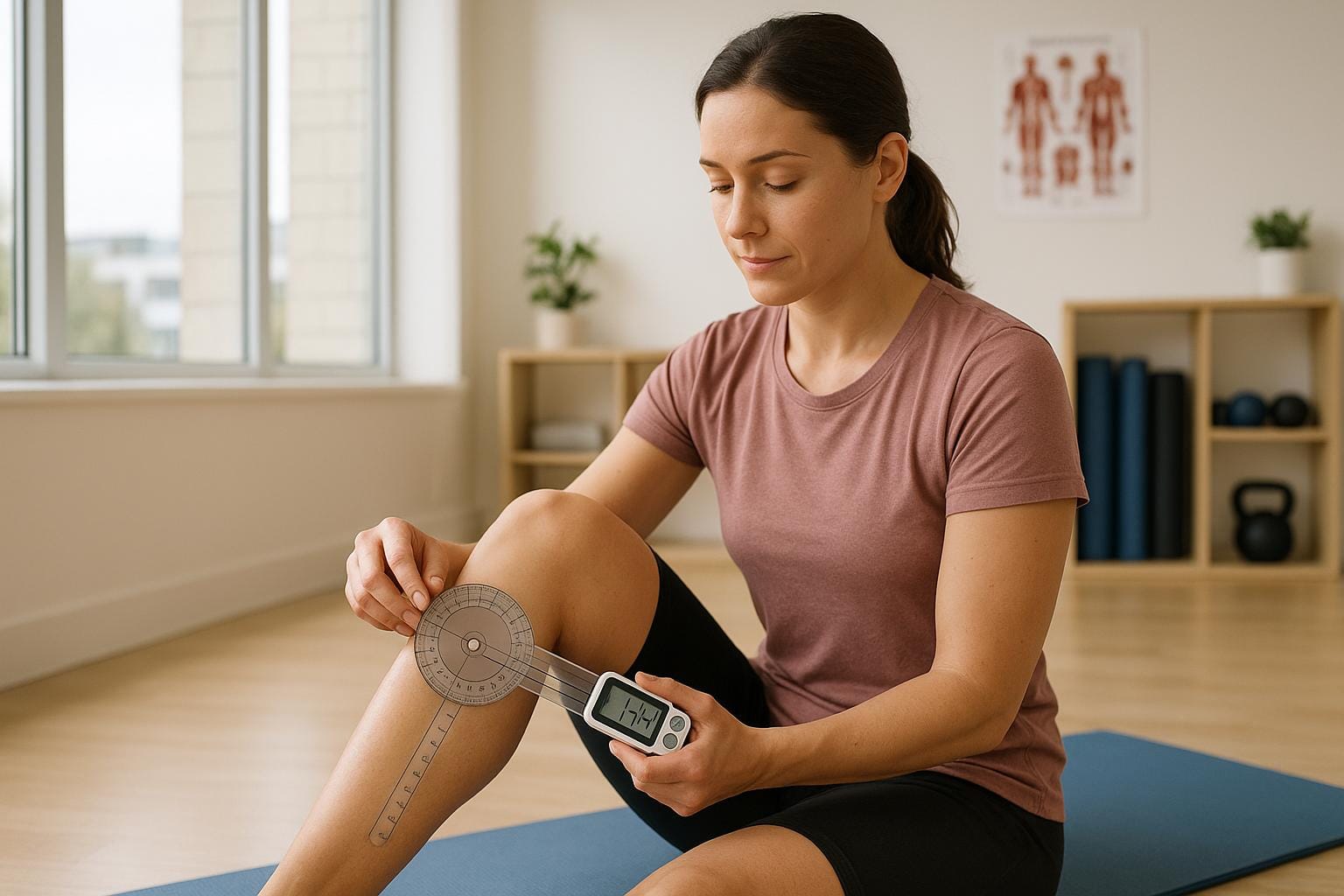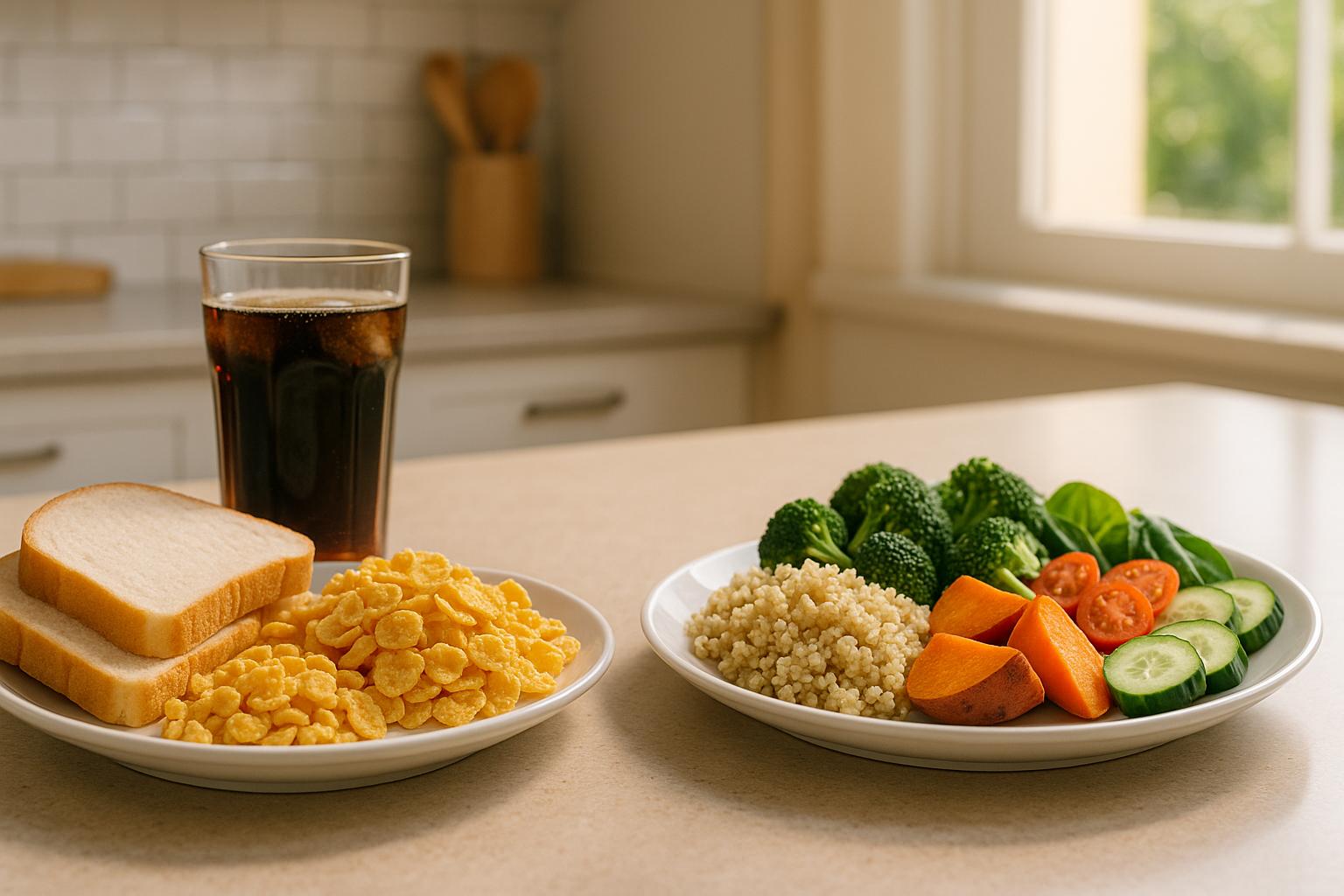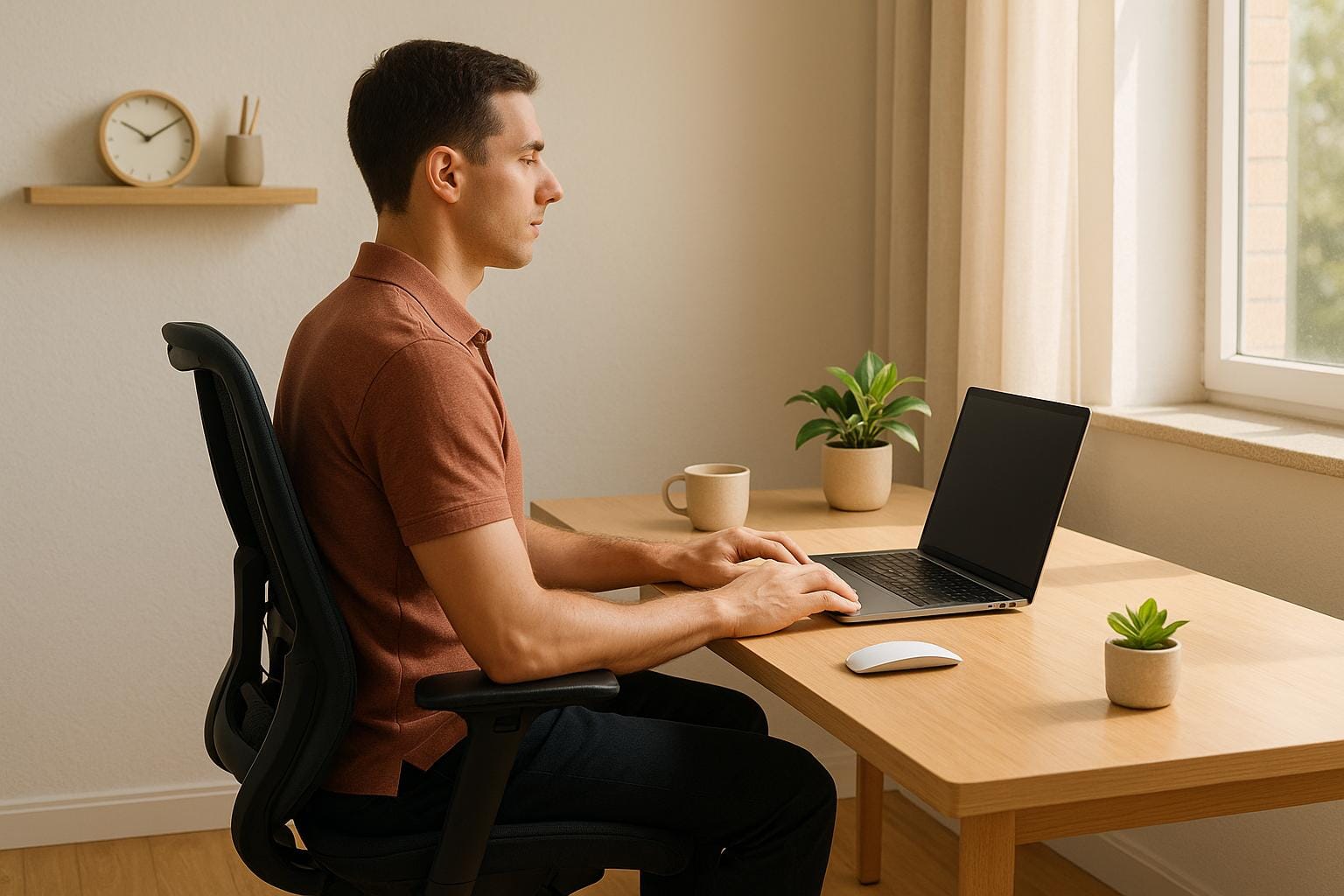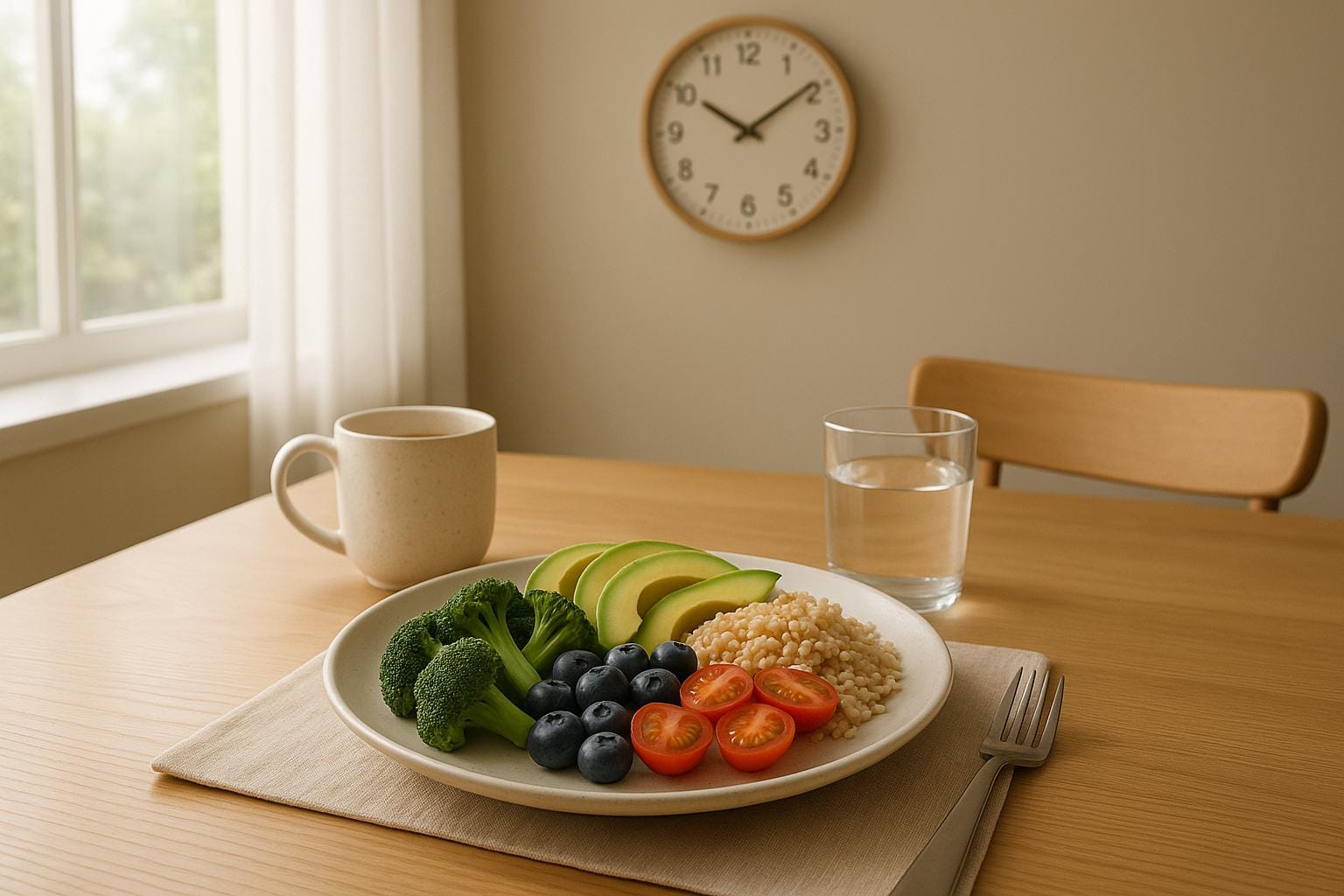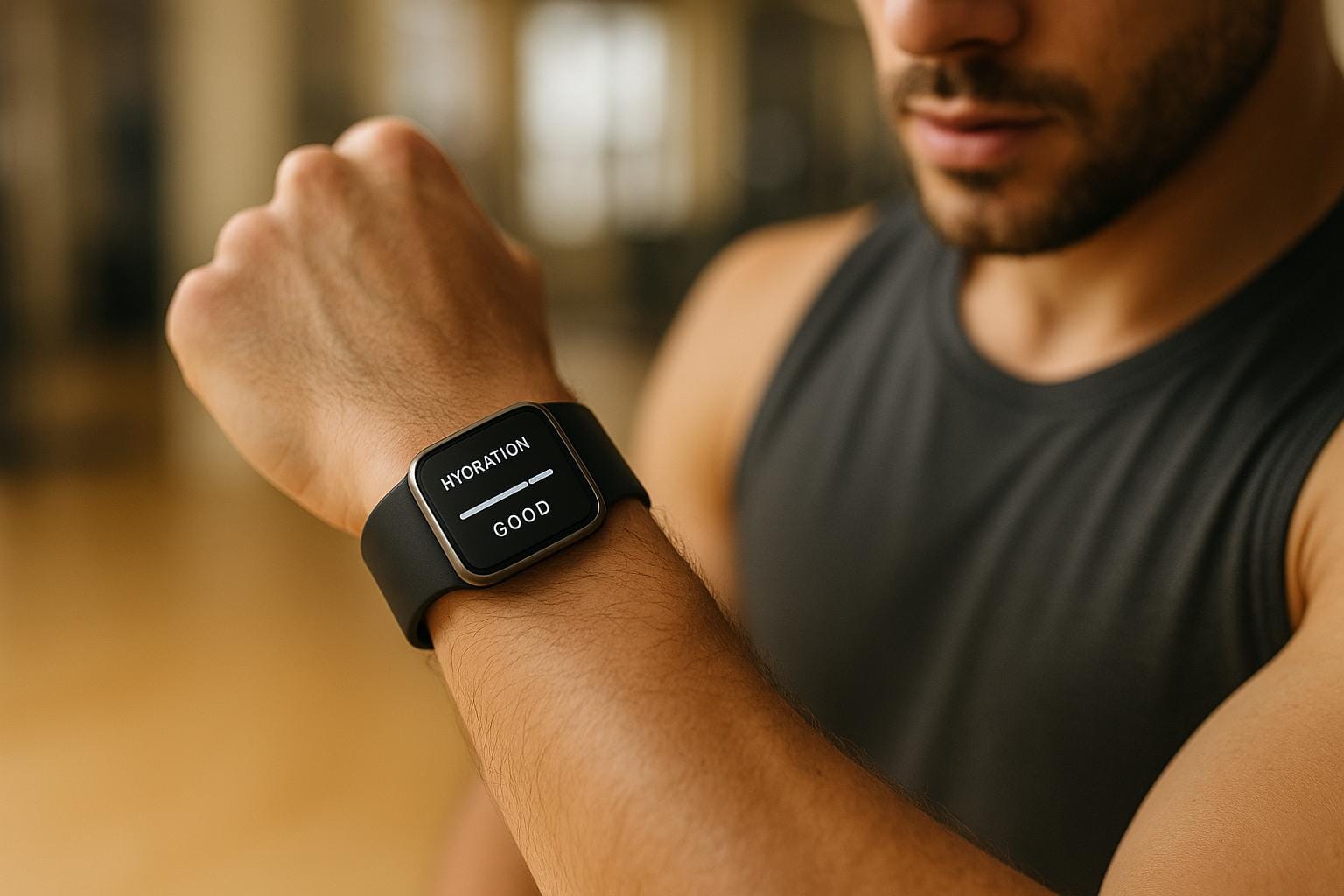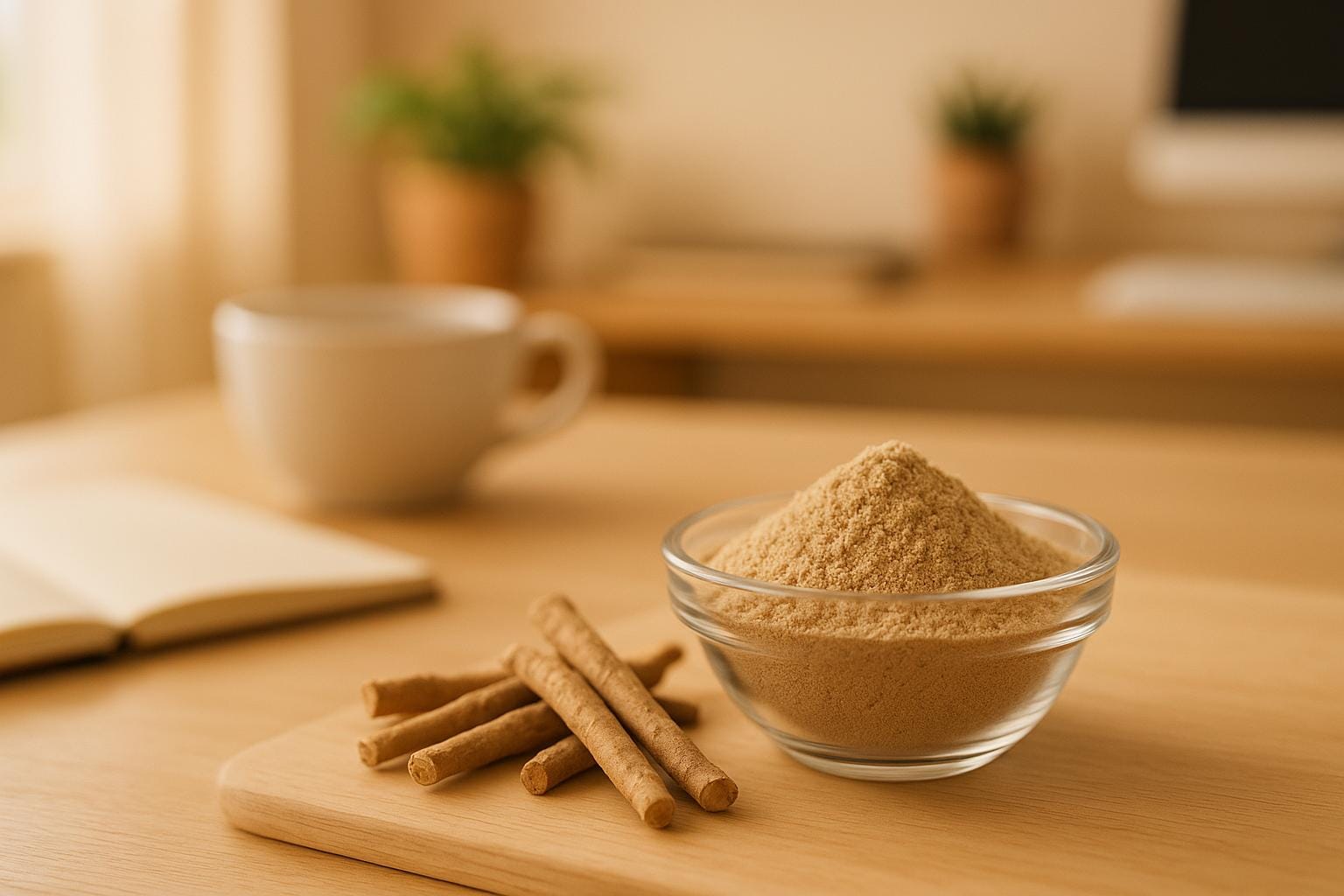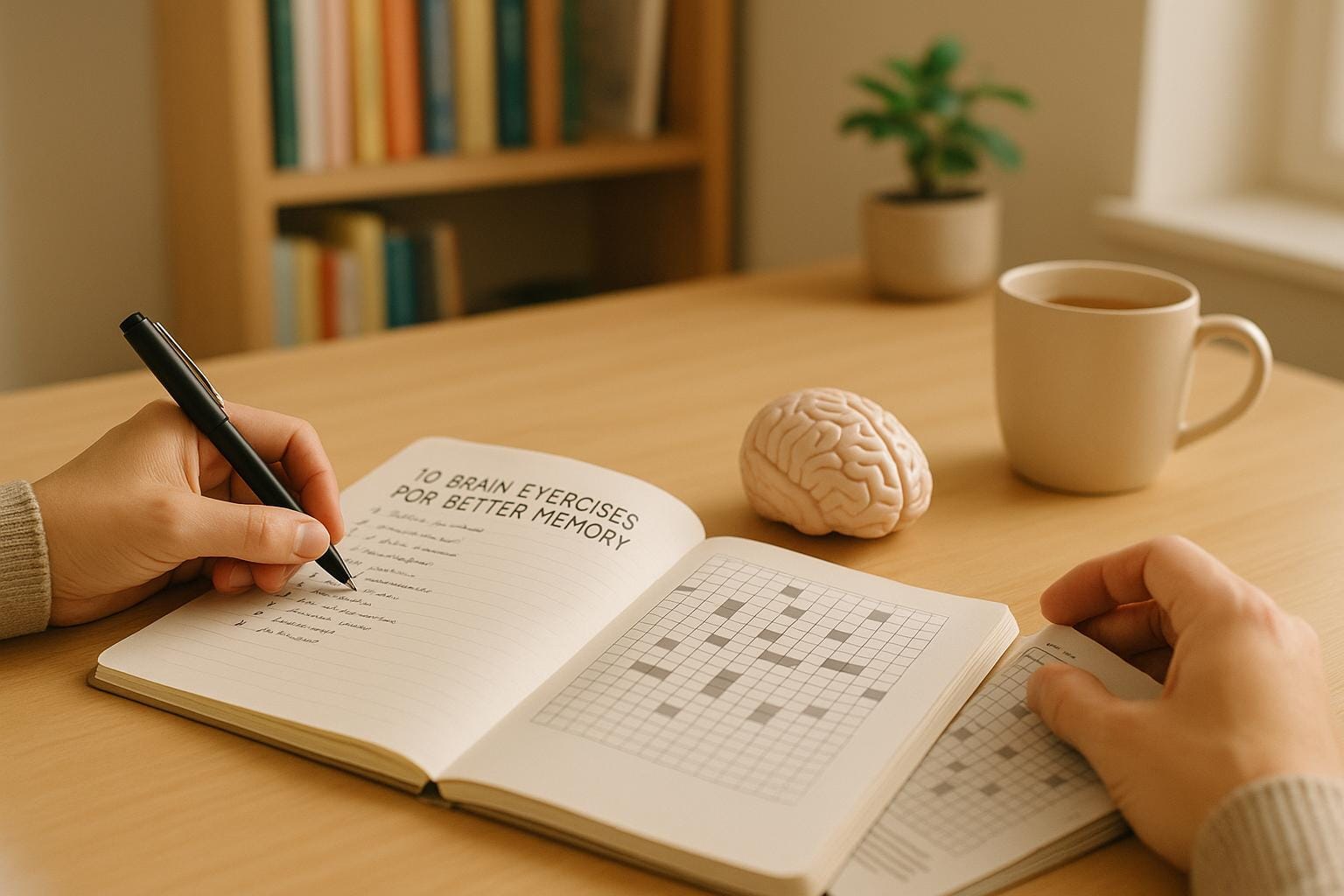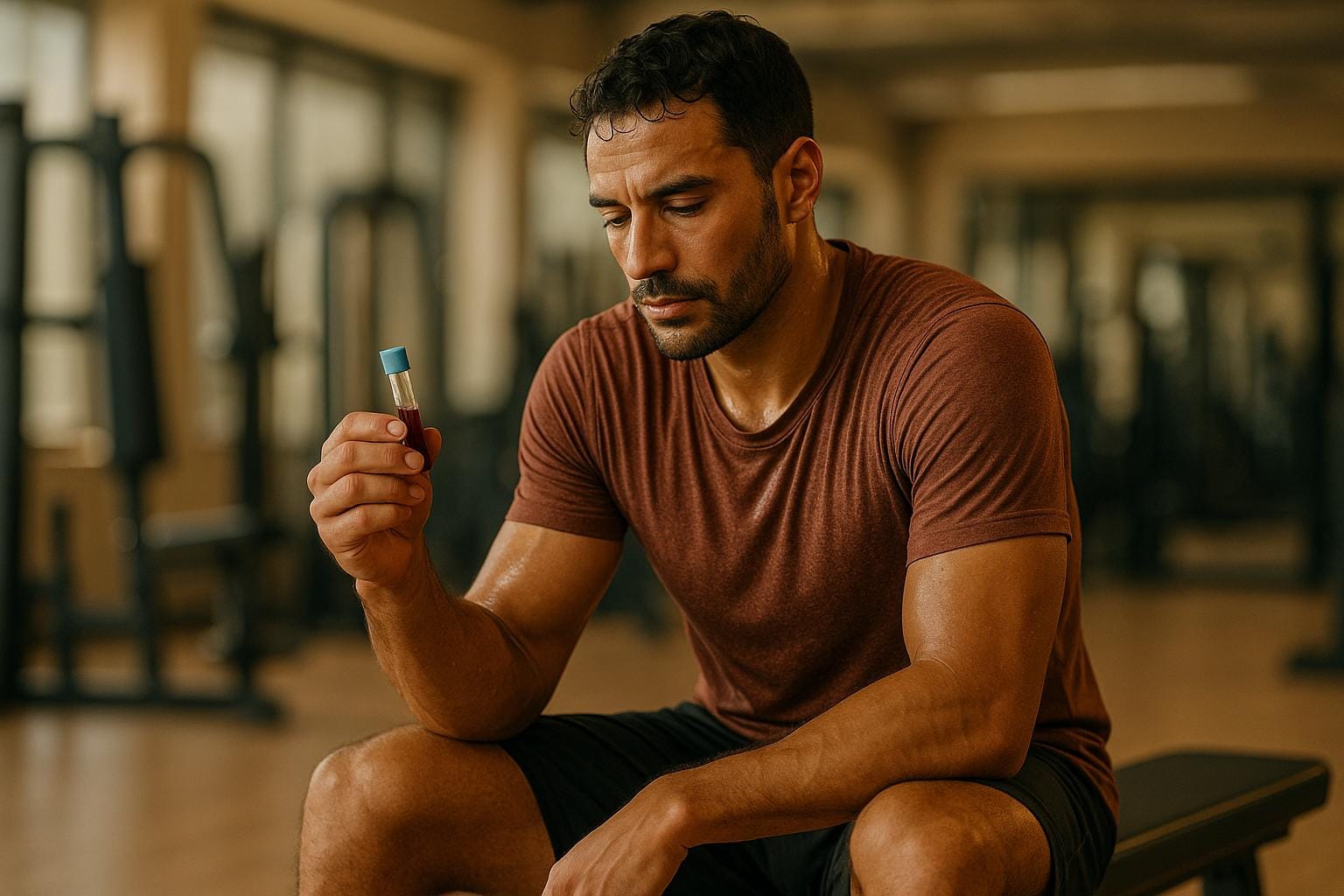Want to speed up recovery after an injury or surgery? Tracking your range of motion (ROM) is key.
Here’s why: ROM measures how far a joint moves, and improving it is essential for regaining mobility. Whether you’re recovering from surgery, managing arthritis, or rehabbing a sprain, understanding and monitoring ROM ensures you’re on the right track.
Quick Takeaways:
- Why it matters: ROM affects everyday tasks like climbing stairs or bending your knee. Tracking it helps avoid setbacks and ensures steady progress.
- Who benefits: Post-surgery patients, athletes, arthritis sufferers, stroke survivors, and more.
- Tools to use: From $25 goniometers to $400 digital devices or even smartphone apps.
- How to measure: Use consistent methods for joints like knees, shoulders, hips, and elbows.
- Avoid mistakes: Stabilize joints, align tools correctly, and avoid guessing angles.
- Set goals: Use SMART goals to track progress (e.g., increase knee flexion by 15° in 4 weeks).
Tracking ROM isn’t just about numbers - it’s about regaining freedom of movement. Start today by picking a tool, measuring a joint, and recording your progress.
Measuring Your Knee Joint Range of Motion at Home: A DIY Guide
Tools for Measuring Range of Motion
Getting precise range of motion (ROM) measurements starts with selecting the right tool. Options range from simple plastic devices costing around $25 to advanced digital systems priced over $1,000. Here’s a closer look at the tools available for various recovery needs.
Basic Measurement Tools
Goniometers are a go-to option for measuring joint angles during rehabilitation. A universal goniometer looks like an oversized protractor with two arms connected by a pivot, marked in degrees. It’s particularly useful for larger joints like the knees and shoulders. For more specific needs, such as hand therapy, small-joint goniometers are available.
- Plastic goniometers: Affordable and effective, an 8-inch model costs about $25.
- Stainless steel goniometers: Durable options, like the Deluxe Small Joint Goniometer, are priced around $65.
- Extendable goniometers: Designed for specialized tasks, these typically cost about $95.
Inclinometers are another handy tool, especially for spinal motion assessments where goniometers might not be practical. These devices use gravity to measure angles:
- A Baseline Bubble Inclinometer costs roughly $150.
- More advanced options, such as the Lafayette Range of Motion Inclinometer, are priced at approximately $675.
- For a comprehensive spinal evaluation, the ROMI Dual Inclinometer System is available for around $1,260.
These tools are highly reliable in clinical settings when used with proper techniques and consistent protocols. Digital tools, discussed next, offer additional accuracy and convenience.
Digital Measurement Options
Digital devices take ROM tracking to the next level by minimizing human error and providing features traditional tools lack. For instance, digital goniometers automate angle readings and often include data storage. The EasyAngle Digital Goniometer, priced at about $400, is a standout option. Dr. Conway McLean described it as:
"well-designed, accurate, and very portable...it is a marvel and well worth the very reasonable expense".
Studies from institutions like Karolinska Institutet and the University of Kentucky confirm its reliability for assessing knee and scapular mobility.
Smartphone apps are another accessible and user-friendly option. For example, a study comparing the PeerWell app to traditional goniometry found excellent interrater reliability, with correlation coefficients between 0.90 and 0.96. Most shoulder movements (excluding abduction) showed differences of less than 1.3°. This suggests smartphone tools can match traditional methods in accuracy and consistency.
For those seeking advanced solutions, systems incorporating markerless motion capture and wearable sensors provide real-time feedback on movement patterns. Although these options are pricier, they offer a detailed view of progress, automatically logging and charting data over time - eliminating the need for manual record-keeping.
How to Pick the Right Tool
Selecting the right ROM measurement tool depends on your recovery goals, budget, and familiarity with technology. If you’re recovering from surgery, consistency in measurements may matter more than advanced features. A simple goniometer, used the same way each time, can provide reliable progress tracking.
Consider the joint you’re measuring:
- Large joints (e.g., knees, shoulders): Standard goniometers work well.
- Small joints (e.g., fingers, wrists): Opt for specialized small-joint goniometers.
- Spinal assessments: Inclinometers, which leverage gravity, are often the better choice.
Comfort with technology is another factor. While digital tools offer benefits like automated tracking and real-time feedback, they’re only effective if used consistently. Sometimes, a basic tool used daily can outperform a high-tech system that sits unused. For guidance, consulting a physical therapist can help you choose the most suitable device.
Whether you go with an affordable plastic goniometer or a sophisticated digital system, sticking to a standardized measurement protocol ensures the most meaningful data for your recovery.
This article is for informational purposes only and is not intended as medical advice. Please consult a healthcare professional before starting any new fitness or wellness routine.
How to Measure Range of Motion Correctly
Getting accurate range of motion (ROM) measurements requires precision and a consistent approach. Proper body positioning, stabilization, and alignment of your tools are key to ensuring your results truly reflect your progress.
Measuring Common Joints Step by Step
Once you've chosen the right tools, here’s how to measure ROM for some of the most common joints.
For shoulder lateral rotation, start with your arm at your side and elbow close to your body. Rotate your arm upward; the average ROM is around 170°. Place the goniometer's axis at the shoulder joint, align the stationary arm with your torso, and follow the moving arm's path.
For shoulder hyperextension, begin with your arm at your side and move it backward. Normal ROM is about 50°. Keep the goniometer's axis at the shoulder joint, aligning one arm with your torso and the other with the moving arm.
To measure knee flexion, lie on your stomach and bend your knee, bringing your heel toward your buttocks. Average ROM is approximately 135°. Position the goniometer's axis at the knee's side, with the stationary arm along the thigh and the moving arm along the lower leg. For knee extension, lie flat with your leg fully extended. Normal extension is 0°, forming a straight line.
For hip flexion, lie on your back and bring one leg upward toward your chest while keeping the other leg flat. Normal ROM is about 100°. Place the goniometer's axis at the side of your hip joint, with the stationary arm aligned along your torso and the moving arm following your thigh. For hip extension, lie on your stomach and move your leg backward; normal ROM is around 20°.
To measure elbow flexion, lie down with your arm flat, then bend your elbow to bring your hand toward your shoulder. The average ROM is about 145°. Place the goniometer's axis at the elbow joint, align one arm with your upper arm, and position the other along your forearm. Straightening your arm to return to 0° measures elbow extension.
For wrist flexion, rest your elbow on a table with your forearm vertical. Bend your hand forward to achieve an average ROM of 80°. For wrist extension, bend your hand backward from the same position, reaching about 70° of movement.
The neutral zero method is the standard system for these measurements, using a 0 to 180° scale to ensure consistency across different joints and sessions.
Recording Your Measurements
Consistency in documentation is just as important as accuracy in measurement. Record each result to track your progress effectively. Include the date, body position during the test, whether the motion was active or passive, and which side of the body was measured. This ensures you can replicate conditions during future sessions.
Create a tracking sheet with columns for the date, joint measured, ROM value, and any notes about pain or stiffness. While digital tools like apps or spreadsheets can automatically calculate progress, a handwritten log works just as well if maintained regularly.
Take note of factors like temperature and time of day, as these can influence your measurements. For instance, morning stiffness might reduce ROM compared to later in the day. Including these details helps explain any variations in your data.
During each session, take multiple measurements and record the best result. If your readings vary significantly, double-check your positioning and goniometer alignment to ensure accuracy.
Common Measurement Mistakes to Avoid
Avoiding errors is crucial for reliable results. Here are common pitfalls and how to prevent them:
- Improper positioning: Ensure the joint moves freely and the goniometer is properly aligned.
- Inadequate stabilization: For example, during knee flexion, failing to stabilize the hip can lead to an inflated mobility reading. Always stabilize the joint above the one being measured to isolate motion.
- Goniometer alignment errors: Use bony landmarks to correctly position the goniometer's stationary and moving arms, and always read the tool at eye level to avoid parallax errors.
- Visual estimation: Studies show that goniometry is more reliable than guessing angles, especially for those with less experience. Stick to objective tools for better accuracy.
- Inconsistent protocols: Follow the same warm-up routine, use the same type of instrument, and take the same number of measurements each time. Deviating from your usual method can make it hard to tell if changes in ROM are real or just due to measurement differences.
- Expectation bias: This can skew results. Having someone else occasionally take measurements or using digital tools that automatically display results can help maintain objectivity.
By following these guidelines, you can ensure your ROM data is reliable and helps guide your recovery process effectively.
This article is for informational purposes only and is not intended as medical advice. Please consult a healthcare professional before starting any new fitness or wellness routine.
Using ROM Data to Guide Your Recovery
Once you've gathered accurate Range of Motion (ROM) measurements, the next step is using that data to make informed decisions about your recovery. These numbers provide a clear picture of your progress and can help you fine-tune your approach to healing. Below, we’ll explore how to set practical recovery goals, understand your progress trends, and recognize when it’s time to seek professional help.
Setting Recovery Goals
ROM data becomes especially useful when you use it to set specific and achievable recovery targets. One effective method is the SMART framework - goals that are Specific, Measurable, Achievable, Relevant, and Time-bound. For example, if your knee flexion post-surgery is 90° (compared to the normal 135°), you might set a goal to increase it by 15° within four weeks. This approach provides a clear and realistic path forward, rather than aiming for vague improvements.
Breaking down larger goals into smaller milestones can also make the process less overwhelming. Let’s say you need to regain 45° of knee flexion. Instead of tackling it all at once, aim for increments of 10–15° every few weeks. This keeps your progress steady and minimizes the risk of overexertion.
Here’s how you can track your progress:
| Progress Indicator | How to Measure | How Often to Track |
|---|---|---|
| Range of Motion | Use a goniometer | Weekly |
| Pain Level | Rate on a 1–10 scale | Daily |
| Strength | Test weight or resistance | Every two weeks |
| Endurance | Track activity duration | Weekly |
Regularly reassessing these indicators is essential. Your body’s response, pain levels, and ROM improvements may require you to adjust your recovery plan along the way. By keeping an eye on these metrics, you can make informed tweaks to stay on track.
Reading Your Progress Patterns
Interpreting your ROM data can reveal valuable patterns about your recovery. It’s important to understand that recovery is rarely a straight line. Most people experience the fastest progress in the first few weeks after treatment or surgery. For instance, research on elbow surgery patients shows that 56% of their final ROM is typically achieved by the three-month mark, with 94% reached by the end of that period.
It’s common for progress to slow down after the initial burst of improvement, often between 6 weeks and 3 months. This plateau is a normal part of the process. In fact, only about 20% of patients have a completely linear recovery. Temporary setbacks are also typical but should be monitored closely. A consistent decline in ROM over multiple sessions may indicate complications.
Comparing your ROM measurements to established norms can also be helpful. For example, women generally have about 30% more ROM in their hands than men. These benchmarks can guide your expectations and help you stay motivated as you work toward your goals.
When to Get Professional Help
Your ROM data can also act as an early warning system, helping you decide when to involve a healthcare professional. Start by consulting a provider to establish your baseline measurements and develop a safe recovery plan. If your ROM numbers show no improvement over 2–3 weeks - especially during a period when progress is expected - it’s a good idea to reach out for professional guidance.
Advances like Remote Therapeutic Monitoring (RTM) now allow therapists to track your progress in real time. This technology enables quicker adjustments to your treatment plan, making your recovery more effective.
Keep an eye out for red flags, such as consecutive declines in ROM or persistent pain. These signs may require a deeper evaluation. Consider the broader picture: in the U.S., one in two adults deals with a musculoskeletal condition each year, costing the healthcare system over $380 billion annually.
Whether it’s a Physical Therapist, Occupational Therapist, or Speech-Language Pathologist, professionals trained in RTM can analyze your data and fine-tune your recovery plan. Sharing your ROM measurements, pain logs, and observations with your healthcare team can lead to faster and more effective results.
This article is for informational purposes only and is not a substitute for medical advice. Always consult a healthcare professional before starting any new recovery program or routine.
Maintaining Range of Motion Long-Term
Reaching your range of motion (ROM) goals is a significant milestone, but it’s not the end of the journey. Keeping and even improving your flexibility over time requires consistent effort. Below are practical ways to make ROM exercises part of your routine, use technology to track progress, and stay committed to long-term mobility.
Adding ROM Exercises to Your Daily Routine
Maintaining your ROM is all about turning stretching and mobility work into a daily habit - just like brushing your teeth. Regular stretching can improve posture, boost athletic performance, reduce muscle tightness, and increase blood flow. These benefits help keep your joints flexible and your muscles functioning well.
"Incorporating a daily stretching routine can offer a variety of benefits for both your physical and mental well-being."
Focus on all major muscle groups, especially those involved in your recovery. Hold each stretch for 15 to 30 seconds, or up to 45 seconds if you’re over 65 to maximize the benefits. The great thing about ROM exercises is their adaptability - you can fit them into your day with ease. For example, try these proven movements:
- Cat-Cow Stretch: Enhances spinal mobility.
- Kneeling Hip Flexor Stretch: Improves hip flexibility.
- Neck Stretch: Eases upper body tension.
- Reclined Hamstring Stretch: Increases leg flexibility.
- Standing Calf Stretch: Supports lower leg mobility.
Stretching before bed can help relieve muscle tension and promote recovery. If you work out regularly, customize your routine to focus on the muscles you use most during exercise.
"The best stretching routine is one that you will do."
Take your time with each stretch, moving slowly and avoiding bouncy motions. A proper stretch should feel like a gentle pull in the muscle - not sharp or painful.
Using Technology for Ongoing Monitoring
Technology has made it easier than ever to track your ROM progress. Wearable devices now provide continuous, precise feedback, reducing the need for manual tracking and minimizing errors. Many of these tools use AI to monitor movement, predict recovery patterns, and offer real-time corrections - all without requiring specialized hardware.
For example, smartphone apps equipped with AI and built-in sensors can analyze posture and guide at-home therapy. These tools make consistent monitoring more accessible and affordable. Pairing these technologies with telehealth services allows physical therapists to remotely track your progress and give tailored advice, creating a more personalized recovery experience.
Staying Consistent and Patient
Consistency is the cornerstone of maintaining your ROM gains. While sticking to an at-home routine can be challenging, it’s not about being perfect - it’s about being realistic and strategic. When you understand how each exercise supports your recovery, it’s easier to stay motivated.
Tie your ROM exercises to activities you already do, like stretching while watching TV or listening to a podcast. Use simple reminders, such as alarms on your phone or visual cues in your home, to prompt you to stay on track. Breaking your routine into smaller, manageable sessions can also make it feel less overwhelming. Tracking your progress - whether through a journal or an app - can help you stay committed and celebrate your milestones.
Ultimately, these exercises are an investment in your long-term health, helping you maintain proper movement patterns and reduce the risk of setbacks. By combining these strategies with regular ROM tracking, you can ensure steady progress and lasting mobility.
This article is for informational purposes only and is not intended as medical advice. Please consult a healthcare professional before starting any new fitness or wellness routine.
Conclusion: Take Control of Your Recovery
Measuring your range of motion (ROM) is about more than just numbers - it’s about taking charge of your recovery. By now, you’ve learned how to measure ROM accurately, interpret the data, and use it to make smarter decisions about your healing process. Turning these measurements into actionable steps helps you stay on track and see real progress.
Tracking ROM isn’t just a tool for monitoring - it’s a way to measure improvement, guide therapy decisions, and find the treatments that work best for you.
"Recovery is about getting back to that baseline and maximizing not only performance but also our health." - Jessica Yeaton, Physical Therapist at UCHealth SportsMed Clinic
Your ROM data does more than show improvement. It also helps prevent injuries by ensuring your joints move freely without strain. Whether you’re an athlete looking to boost performance, someone recovering from an injury, or an older adult aiming to stay independent, tracking ROM supports better movement and overall quality of life.
Progress takes time, patience, and consistency. Set realistic goals, celebrate small wins, and lean on your support system when challenges arise.
"When it comes to physical therapy, consistency is the secret ingredient that can make all the difference in your journey to recovery." - Symmetry Physical Therapy
No matter the tool you use - whether it’s a goniometer, a smartphone app, or guidance from a physical therapist - the most important step is to start. Regularly measuring your ROM gives you the power to make informed decisions, track meaningful progress, and regain the mobility you need for everyday life.
Take the first step today. Choose one joint, establish your baseline, and begin monitoring regularly. Your future self will be grateful for the effort you put in now.
This article is for informational purposes only and is not intended as medical advice. Please consult a healthcare professional before starting any new fitness or wellness routine.
FAQs
What advantages do digital tools have over traditional goniometers for tracking range of motion?
Digital tools bring some clear advantages over traditional goniometers when it comes to tracking range of motion. For starters, they offer improved precision and are designed to be more user-friendly - many can even be operated with just one hand. Plus, a lot of these tools automatically log and save measurements, cutting down on human error and simplifying progress tracking over time.
Another standout feature is their ability to process data quickly and deliver real-time feedback, which can be incredibly useful during recovery. Many digital tools are also lightweight and portable, making them perfect for telehealth or rehabilitation settings where remote monitoring is key. For those who value accurate and hassle-free tracking, these tools are a solid choice.
How can I accurately track my range of motion during recovery at home?
To keep tabs on your range of motion (ROM) at home, you can rely on straightforward tools like a goniometer or a smartphone app specifically created for ROM measurements. These tools make it easier to track your progress and ensure you're measuring movements consistently. Many apps even offer step-by-step guidance to help you maintain proper technique.
Sticking to a routine is crucial - try to measure at the same time each day, under similar conditions, and with the same device. Keep a record of your results in a journal or within the app to monitor your progress over time. Another handy tip is to film your movements. This allows you to review your technique and spot areas where you’ve improved. Regular tracking doesn’t just aid recovery; it also keeps you motivated by showing tangible progress.
When should I see a healthcare professional if my range of motion isn’t improving?
If you're not seeing the progress you hoped for with your range of motion, there are certain situations where reaching out to a healthcare professional is essential. For example, if you're dealing with persistent pain that lasts for several days or even weeks, if routine activities cause discomfort, or if your joint feels unstable, it's time to seek expert advice.
It's also wise to consult a doctor or physical therapist if you've recently undergone surgery or sustained an injury and notice little to no improvement in your mobility. Addressing the issue early can help uncover any underlying problems and keep your recovery moving in the right direction.


